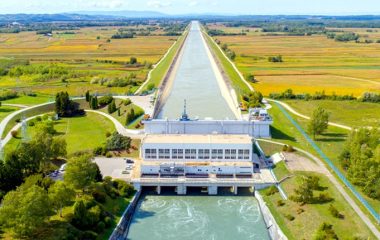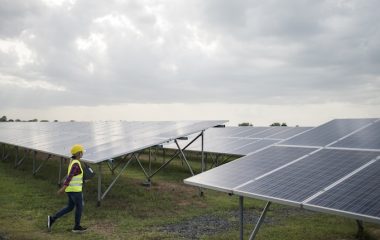
Photo: TPP Nikola Tesla B (EPS)
State-owned power utility Elektroprivreda Srbije (EPS) made a net loss of RSD 1.3 billion (around EUR 11 million) in 2018, according to the business report of the EPS Group for 2018. A year earlier, the company reported a net profit of around RSD 6.3 billion (around EUR 53 million).
EPS posted a pre-tax profit of RSD 0.3 billion (around EUR 2.54 million), and an operating profit of RSD 5.7 billion (around EUR 48.4 million). The financial profit was RSD 6.9 billion (around EUR 58.6 million), while the company’s other revenues and expenses created a RSD 12.3 billion (around EUR 104.5 million) loss, according to the report.
Other operating expenses increased from RSD 18.6 billion (EUR 158 million) to RSD 24.6 billion (EUR 209 million)
According to EPS’ consolidated income statement, the company’s revenues increased from RSD 223 billion (EUR 1.89 billion) to 231 billion (around EUR 1.96 billion), while its expenses rose by RSD 15 billion (around EUR 127.4 million) and reached RSD 225.9 billion (around EUR 1.92 billion).
Other operating expenses increased from RSD 18.6 billion (around EUR 158 million) to RSD 24.6 billion (around EUR 209 million), while the costs of electricity procurement amounted to RSD 34.3 billion (around EUR 291.5 million), a RSD 1.5 billion (around 12.7 million) increase year-on-year.
EPS purchased RSD 13.7 billion (around EUR 116.4 million) worth of electricity, which was 12% more than planned due to lower production by EPS’ power plants.
Because of the severe weather conditions (low temperatures), during the winter, coal-fired power plants produced 13% less than was planned for 2018, the report notes.
The units in coal-fired power plants were on the operational technical minimum in accordance with the available quantities and quality of coal in order to maintain levels of the coal deposits above the minimum level and ensure stable production, while part of the units was pushed into a cold reserve due to the sufficient quantities of coal.
All this led to electricity imports. EPS ensured electricity supply for its customers and the fulfillment of its obligations under long-term contracts, the report reads.
EPS’ power plants generated 34,346 GWh of electricity in 2018, 5% less than planned and 1% more year-on-year.




















Be the first one to comment on this article.